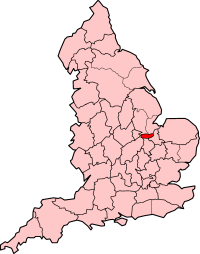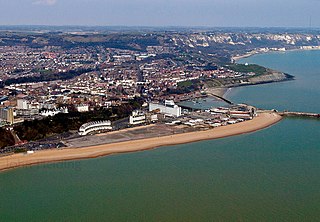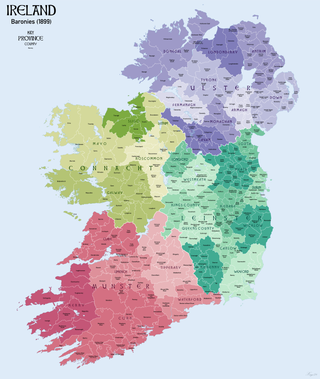A grand jury is a jury—a group of citizens—empowered by law to conduct legal proceedings, investigate potential criminal conduct, and determine whether criminal charges should be brought. A grand jury may subpoena physical evidence or a person to testify. A grand jury is separate from the courts, which do not preside over its functioning.
A riding is an administrative jurisdiction or electoral district, particularly in several current or former Commonwealth countries.

A justice of the peace (JP) is a judicial officer of a lower or puisne court, elected or appointed by means of a commission to keep the peace. In past centuries the term commissioner of the peace was often used with the same meaning. Depending on the jurisdiction, such justices dispense summary justice or merely deal with local administrative applications in common law jurisdictions. Justices of the peace are appointed or elected from the citizens of the jurisdiction in which they serve, and are usually not required to have any formal legal education in order to qualify for the office. Some jurisdictions have varying forms of training for JPs.

The counties of England are divisions of England. Counties have been used as administrative areas in England since Anglo-Saxon times. There are two main legal definitions of the counties in modern usage: the 84 counties for the purposes of local government, and the 48 counties for the purposes of lieutenancy, also termed the ceremonial counties.

The Soke of Peterborough is a historic area of England associated with the City and Diocese of Peterborough, but considered part of Northamptonshire. The Soke was also described as the Liberty of Peterborough, or Nassaburgh hundred, and comprised, besides Peterborough, about thirty parishes.

Folkestone and Hythe is a local government district in Kent, England, in the south-east of the county. Its council is based in the town of Folkestone. The authority was renamed from Shepway in April 2018, and therefore has the same name as the Folkestone and Hythe parliamentary constituency, although a somewhat narrower area is covered by the district.

A lathe formed an administrative country subdivision of the county of Kent, England, from the Anglo-Saxon period, until it fell out of general practical use in the early twentieth century.

The courts of quarter sessions or quarter sessions were local courts that were traditionally held at four set times each year in the Kingdom of England from 1388; they were extended to Wales following the Laws in Wales Act 1535. Scotland established quarter sessions in the 17th century. Quarter sessions were also established in Ireland and British colonies overseas.
A resident magistrate is a title for magistrates used in certain parts of the world, that were, or are, governed by the British. Sometimes abbreviated as RM, it refers to suitably qualified personnel—notably well versed in the law—brought into an area from outside as the local magistrate, typically to be the guiding hand amongst other lay magistrates.
Custos rotulorum is a civic post that is recognised in the United Kingdom and in Jamaica.

The History of local government in Scotland is a complex tale of largely ancient and long established Scottish political units being replaced after the mid 20th century by a frequently changing series of different local government arrangements.

In Ireland, a barony is a historical subdivision of a county, analogous to the hundreds into which the counties of England were divided. Baronies were created during the Tudor reconquest of Ireland, replacing the earlier cantreds formed after the original Norman invasion. Some early baronies were later subdivided into half baronies with the same standing as full baronies.
A clerk of the peace held an office in England and Wales whose responsibility was the records of the quarter sessions and the framing of presentments and indictments. They had legal training, so that they could advise justices of the peace.
The District Court is the main court of summary jurisdiction in Ireland. It has responsibility for hearing minor criminal matters, small civil claims, liquor licensing, and certain family law applications. It is also responsible for indicting the accused and sending them forward for trial at the Circuit Court and Central Criminal Court.
North Hampshire was a constituency as one of two in the county of Hampshire proper, which returned two Members of Parliament (MPs) to the House of Commons of the UK Parliament between 1832 and 1885. Its members were elected by the bloc vote version of the first-past-the-post system.

The courts of assize, or assizes, were periodic courts held around England and Wales until 1972, when together with the quarter sessions they were abolished by the Courts Act 1971 and replaced by a single permanent Crown Court. The assizes exercised both civil and criminal jurisdiction, though most of their work was on the criminal side. The assizes heard the most serious cases, most notably those subject to capital punishment or, later, life imprisonment. Other serious cases were dealt with by the quarter sessions, while the more minor offences were dealt with summarily by justices of the peace in petty sessions.
Courts of petty session, established from around the 1730s, were local courts consisting of magistrates, held for each petty sessional division in England, Wales, and Ireland. The session's work dealt with matters such as minor theft and larceny, assault, drunkenness, bastardy examinations, arbitration and deciding whether to refer a case to the quarter sessions. From 1872 the courts of petty sessions were also responsible for approving licences to sell alcohol in alehouses and public houses.

The Liberties Act 1850 was an Act of the Parliament of the United Kingdom that provided a mechanism to enable the various liberties or independent jurisdictions in England and Wales to be merged into the geographical counties in which they lay.
From 1949 to 2005, magistrates' courts committees (MCCs) had overall responsibility for management of the magistrates' courts service within their areas in England and Wales.

The Lathe of Scray is an historic division of the county of Kent, England, encompassing the present-day Districts of Swale, Ashford, and the eastern part of Tunbridge Wells The Lathes of Kent were ancient administration divisions originating, probably, in the 6th century, during the Jutish colonisation of the county.










